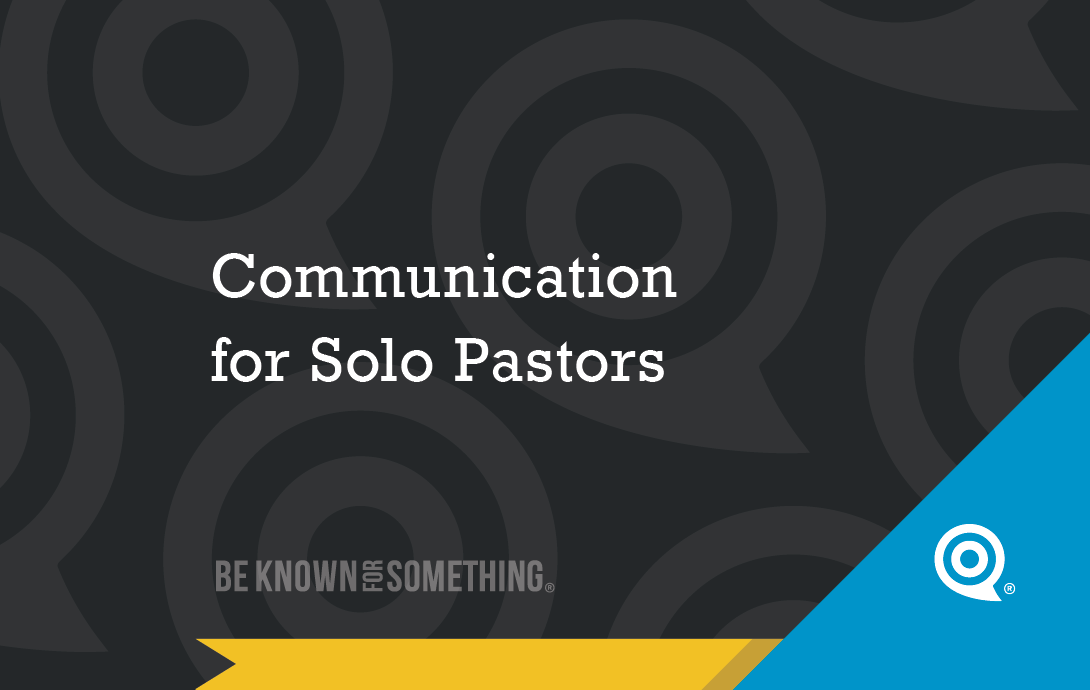Church communication for solo Pastors

Most churches have one person in leadership. A person who is a very busy solo Pastor who has to do most with the help of volunteers. Often, solo pastors wonder if they’re juggling so much that they’re not doing anything well. Let’s look at church communication, identify the most important areas, and learn how to do them well.
- Know your audiences. Effective church communication rises and falls on how well you know your audience. So, church communication for solo pastors must start here. Remember however, you have two audiences: your congregation (internal) and your community (external). As a solo pastor, you can be tempted to focus only on the people in your pews. Sure, get to know them and their needs, concerns, and goals. But remember God placed you in your community for a reason. There are more outside of your church than inside.
Understand the growth potential for your local church is the community around you. They are the people God wants us to “go and tell”. Overlay their needs, concerns, and goals onto your member’s needs, concerns, and goals to identify common issues. Then concentrate on being a solution to their needs and concerns or a path to their goals.
NOTE: Churches who only focus internally usually stagnate or decline. Know and love BOTH of your audiences so your communication content will be needed by BOTH. That’ll keep members coming back and be a good reason for those in your community to pay attention. - Create some controls and fences. As a solo pastor you can’t do it all. That’s an understatement. So, limit your church communication. Decide what you should be known for and focus on that beneficial thread as you’re building content. Also, restrict design visual elements so they become familiar to your audience too. This will build trust and confidence in your communication.
Establish a simple church logo. Then the symbol and words will help establish the visual fences to your content. Use no more than two fonts in your logo, and therefore, in your communication materials. And restrict your colors to a primary and a secondary color, again, from your logo, and throughout your communication materials.
Your logo should also have a secondary tagline that says what you want to be known for. This thread should be 3-5 words and it’s something your audience desires. Sure, this church brand building takes time but it definitely saves time in the long run. It allows you to say (and design) less, so people listen more. Consider limiting yourself to one or two graphic templates that you change out the words and images (Canva, or similar, is a great resource for establishing a branded look). - Promote a trusted communication source. Your audience needs to quickly identify where to find information about your church ministries. This source needs to be trusted as the best place to find up-to-date information, as well as, a place your audience wants to find it.
In the past, churches relied on a printed bulletin or calling the church office. These take so much time and money and the world has moved towards wanting a digital source. Based on the time and budget you have as a solo pastor, identify one source for information and regularly reinforce to your congregation that it’s THE place to go for the correct information. Then concentrate on that one tool or channel. That can be a website, your social media page, a weekly email, or your bulletin. - Maintain a basic web presence. If you choose to have a bulletin as your trusted source, slowly edit the bulletin information and point to the details that are online. This transitional church communication period where older people want printed material is slowly giving way to the more economical online reliance. Therefore, start working on a web presence.
Facebook is the cheapest and easiest communication tool where most of your audience browses for many hours a day. If you don’t have the expertise to build a website, create a free Facebook page for your church. And then Facebook groups under that page for ministries. Then work on building content that is shareable, entertaining, informational, and needed. Most importantly, craft your “about” description to contain your city’s name, your thread, and relevant keywords that your community would be searching for.
After that, work towards a simple church website that does the same but allows a variety of content. There are many website packages that are perfect for the solo pastor with no developer skills needed. - Get a communication volunteer to assist. After the church communication elements are in place, and you’ve established the controls and rhythms for what kind of content you produce, be on the lookout for members who would like to help as part of their ministry. Start slowly with them and guide them as you watch response and engagement from your audience. Gradually work towards a full-time ministry assistant if you’d like.
Church communication for solo pastors can be difficult and time consuming especially if you want to expand to more social media channels, a full website, and weekly emails.
Finally, let me implore you to start small and do church communication properly with a few tools or channels before you expand too quickly. Build on the success of one as you move towards another. Establish a high standard that your members would be proud of and make sure it’s sustainable before expanding.

Want 25 Game-Changing Resolutions?
Related Posts

True thankfulness: communicating gratitude that connects
We’re just a couple weeks away from Thanksgiving. Though you might not know it by the jingling commercials already flooding

AI Prompts Every Church Communicator Should Be Using
Artificial Intelligence (AI) isn’t replacing church communicators, it’s simply helping the good ones work smarter. Tools like ChatGPT (and similar)

Church Growth Strategy: Clarity That Connects
Most churches pray for growth but overlook one of their most effective tools: a clear church growth strategy built on

